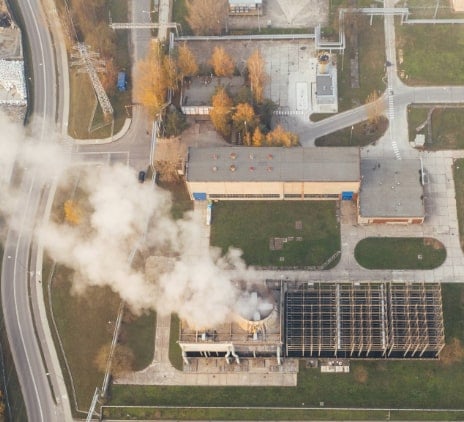-
Accounting Advisory
Our accounting advisory team help businesses meet their complex financial reporting requirements. The team can support in applying new financial reporting standards, IFRS/ US GAAP conversions, financial statement preparation, consolidation and more.
-
Payroll
Our team can handle your payroll processing needs to help you reduce cost and saves time so that you can focus on your core competencies
-
Managed accounting and bookkeeping
Outsourcing the financial reporting function is a growing trend among middle market and startup companies, as it provides a cost-effective way to improve the finance and accounting function. Our team can help with financial statement preparation, consolidation and technical on-call advisory.
-
Accounting Advisory
Our team helps companies keep up with changes to international and domestic financial reporting standards so that they have the right accounting policies and operating models to prevent unexpected surprises.
-
Crypto Accounting Advisory Service
Our team can help you explore appropriate accounting treatment for accounting for holdings in cryptocurrencies, issuance of cryptocurrencies and other crypto/blockchain related accounting issues.
-
ESG Reporting and Accounting
As part of our ESG and Sustainability Services, our team will work with you on various aspects of ESG accounting and ESG reporting so that your business can be pursue a sustainable future.
-
Expected Credit Loss
Our team of ECL modelling specialists combine help clients implement provisioning methodology and processes which are right for them.
-
Finance Transformation
Our Finance Transformation services are designed to challenge the status quo and enable your finance team to play a more strategic role in the organisation.
-
Managed Accounting and Bookkeeping Services
Outsourcing the financial reporting function is a growing trend among middle market and startup companies, as it provides a cost-effective way to improve the finance and accounting function. Our team can help with financial statement preparation, consolidation and technical on-call advisory.
-
Business Tax Advisory
Our business tax team can help you navigate the international tax landscape, grow through mergers and acquisitions, or plan an exit strategy.
-
Corporate Finance
Our corporate finance team helps companies with capital raising, mergers and acquisitions, private equity, strategic joint ventures, special situations and more.
-
Financial Due Diligence
From exploring the strategic options available to businesses and shareholders through to advising and project managing the chosen solution, our team provide a truly integrated offering
-
Valuations
Our valuation specialists blend technical expertise with a pragmatic outlook to deliver support in financial reporting, transactions, restructuring, and disputes.

-
Sustainability with the ARC framework
Backed by the CTC Grant, businesses can tap on the ARC Framework to gain access to sustainability internally, transform business processes, redefine job roles for workers, and enhance productivity. Companies can leverage this grant to drive workforce and enterprise transformation.

-
Business Tax Advisory
Our business tax team can help you navigate the international tax landscape, grow through mergers and acquisitions, or plan an exit strategy.
-
Corporate Tax Compliance
Our corporate tax teams prepare corporate tax files and ruling requests, support you with deferrals, accounting procedures and realise tax benefits.
-
Tax Governance
Our Tax Governance Services are designed to assist organisations in establishing effective tax governance practices, enabling them to navigate the intricate tax environment with confidence.
-
Goods and Services Tax
Our GST team supports organisations throughout the entire business life-cycle. We can help with GST registration, compliance, risk management, scheme renewals, transaction advisory and more.
-
Transfer Pricing
Our Transfer Pricing team advises clients on their transfer pricing matters on and end-to-end basis right from the designing of policies, to assistance with annual compliance and assistance with defense against the claims of competing tax authorities.
-
Employer Solutions
Our Employer Solutions team helps businesses remain compliant in Singapore as well as globally as a result of their employees' movements. From running local payroll, to implementing a global equity reward scheme or even advising on the structure of employees’ cross-border travel.
-
Private Client Services
Our private client services team provides a comprehensive cross section of advisory services to high net worth individuals and corporate executives, allowing such individuals to concentrate on their business interests.
-
Welfare and benefits
We believe that a thriving team is one where each individual feels valued, fulfilled, and empowered to achieve their best. Our welfare and benefits aim to care for your wellbeing both professionally and personally.
-
Career development
We want to help our people learn and grow in the right direction. We seek to provide each individual with the right opportunities and support to enable them to achieve their best.
What does this mean for discount rates?
Falling technology costs, access to lower cost capital and greater independence from government support is driving investment growth in the global renewable energy sector. Rapid commercialisation and industry expansion has led to renewable energy approaching the tipping point to “grid parity” in parts of the world. Grid parity means that energy can be generated from renewable sources at a price cheaper or equal to purchasing it from the electricity grid, which still relies heavily on fossil fuels.
$201 billion was invested globally in utility scale renewable energy projects in 2016 alone, with wind and solar leading the way. Many of the sector’s active investors are the larger funds looking for long-term and stable inflation indexed cash flows. The discount rate (a proxy of cost of capital) is important for all investors, as it is key to determining the fair value or market price for projects. However, accurate data is extremely hard to access, causing investors to rely on their own experience and advice from valuation experts.
Therefore, Grant Thornton UK surveyed investors in renewable energy markets to find out typical discount rates. More than 100 investors from ten strong renewable energy markets were surveyed. Collectively, they represent billions of dollars of capital under management. Investors were asked their views on levered and unlevered cost of capital across hydro, solar, onshore wind and offshore wind projects.
Some key results of the Renewable energy discount rate survey [ 2929 kb ], include, unlevered discount rates:
- across Europe and North America average 6%, 6.5% and 7.5% for solar, onshore wind and offshore wind respectively
- in the Nordics average 5% for hydro
- in Australia average 6.75% and 7.5% for solar and onshore wind respectively.
The cost of capital needs to be considered in the context of the various underlying assumptions such as power curves, inflation, project lives, and so on: all of which will vary for each respondent.
What does this mean for investors?
There is a significant amount of capital out there wanting to find a home. Part of the appeal of investing in renewable resources projects is the asset class which has inbuilt proven technologies and inflation indexed cash flows. Renewables projects globally are attractive due to high growth projections and M&A opportunities. Environmental challenges are by nature on a planetary scale and as a result investors need solid data to back up their capital decisions.
In turn, as valuers, we need to have robust insight into each of the renewable energy sources across the markets where we value projects. When it comes to having a view on cost of capital, it is important to be as close to funds and transactions as possible. Hence, we launched this survey to help augment our experience valuing such projects and to ensure our clients are well informed.

